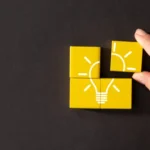Feeling uninspired? This article explores the powerful synergy between Agile and Design Thinking, a winning combo that ignites innovation and fuels startup growth. Table of contentsUnderstanding Agile methodologyWhat is Design ThinkingBenefits of Integrating Agile with Design ThinkingThe Agile and Design Thinking ProcessAgile and Design Thinking in action: Case studiesTips for successfully integrating Agile with Design...
RELATED ARTICLES
© NewInAsia.com 2025








